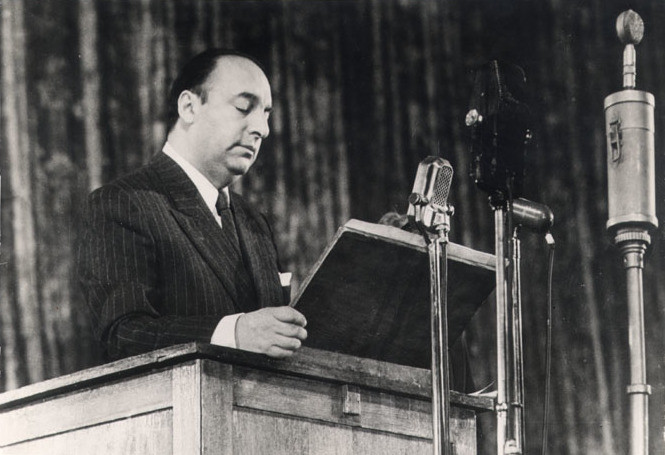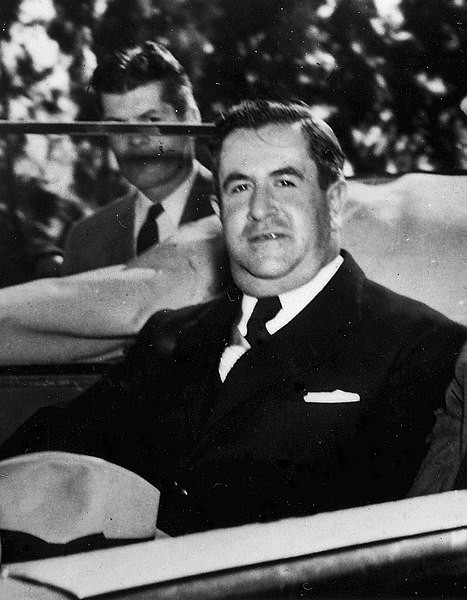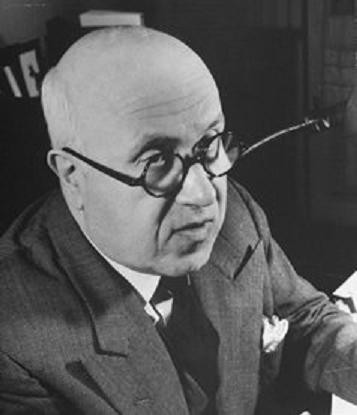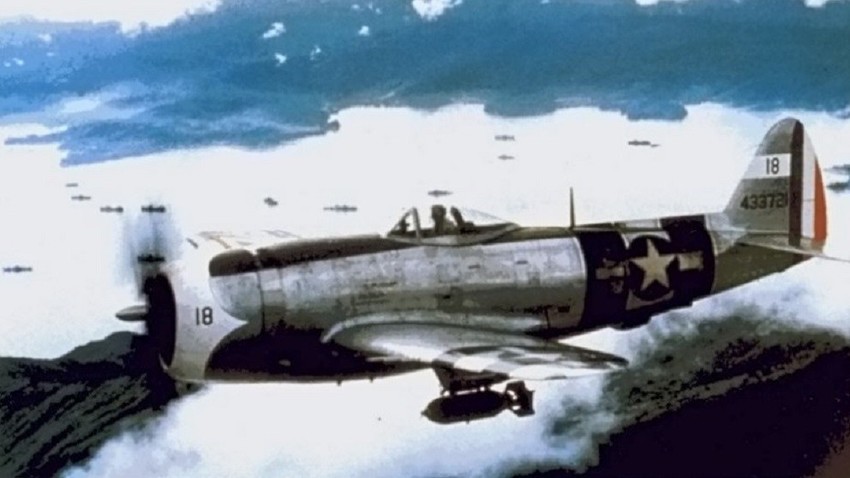P-47 of the Mexican Expeditionary Air Force flying over the Philippines in 1945.
Public domain
–
A solidarity movement toured countries such as Mexico and Argentina after learning about the Nazi attack in 1941.
–
By the end of 1941, Guatemala, Honduras, the Dominican Republic, Costa Rica, Cuba, Panama, and El Salvador had declared war on the aggressor countries. In the second half of 1942 Brazil and Mexico joined, and in February 1945 Argentina, Venezuela, Paraguay, Uruguay and Peru joined. Although it did not participate in the war directly, it supplied raw materials to the United States.
Brazilian airmen before leaving on mission over Italy.
Public domain —
However, from the first days of World War II in Latin America, a massive movement of solidarity with the Soviet Union began to take shape. On June 22, 1941, thousands of inhabitants of Buenos Aires went to the seaport of the Argentine capital to greet the sailors of the ship Tbilisi, it was there. Despite the presence of numerous policemen, people managed to get close to the ship. Later, the ship crossed the Pacific Ocean, passing through Chile, where it received an enormous quantity of coal.
Even in the ranks of the Red Army a group of Latin Americans fought. Most of them were graduates of the international orphanage in the city of Ivanovo. They were part of the troops and guerilla units. I know of two cases of soldiers who fought as partisans on the outskirts of Leningrad.

Aldo Vivó
Hispano-Cuban Magazine —
Three waves of help
The solidarity movement was joined by different Latin American organizations, both political and social. It was organized in three directions. First, they conveyed political and moral support to the USSR through demonstrations. Later, as he grew stronger, he began to send aid directly to the Red Army. There is the example of the Cuban workers who collected 40,000 cigars and large amounts of sugar, or the Chileans, who among other demands said: “Let’s help with a day’s salary” and demanded that a ship full of copper be sent to the USSR .
It was in Mexico and Cuba where this solidarity movement reached its greatest scope. The friendly relationship with the Aztec country was not new. The largest Confederation of workers in Latin America was located in this country, headed by Lombardo Toledano, which has a strong symbolic value. A remarkable characteristic is that in addition to the masses, representatives of the Latin American cultural world also participated; figures such as Juan Marinello, Narciso Bossols or Pablo Neruda, among many others.

Pablo Neruda, during a visit to the USSR in 1950
Public domain —
The third aspect of this movement was to normalize diplomatic relations with the Soviet Union. When we entered the war there was not even an exchange of embassies. But the masses asked to break relations with the Axis powers and improve them with the USSR. In October 1942, Cuba became the first Latin American country to propose establishing diplomatic relations with the USSR. Then the Central American countries did, and in 1943 Colombia joined. Chile did so in 1944 and Argentina in 1946. As for Peru, in 1945 the state parliament recommended establishing diplomatic ties, but the proposal was not carried out until 1969.
By the end of the war, on May 9, 1945, 12 Latin American countries had established diplomatic relations with the USSR on their own initiative. Thus, the Latin American people realized that by defending their homeland the Soviet Union was also defending the nations of the hemisphere. The statements in which it was affirmed that being a true citizen of Mexico means being a patriot and friend of the USSR were not strange.
Nor should we forget the Russian compatriots residing in Latin America, who at that time numbered more than 100,000 people, and participated in the solidarity movement by creating aid organizations.
Relationships after the end of the war
The victory of the Allies was celebrated in Latin America with a series of demonstrations. The heads of state made their statements in this regard. The then president of Mexico, Manuel Ávila Camacho, declared: “Upon learning of the definitive setback of the German Army, I recall together with my country the admirable efforts of the heroic Soviet people during the years of the struggle against the fascist troops.” The president of Uruguay wrote that “the people and the Government of Uruguay applaud his triumph, understanding the sacrifice that was made in the name of victory.” On May 8 and 9 in Latin American capitals, demonstrations of thousands of people were held in honor of the victory.

Manuel Ávila Camacho, 1943.
Public domain —
The USSR sent its best diplomats to be ambassadors to Latin America. At the same time, it should be noted that the Latin American ambassadors who came to the USSR were distinguished politicians. Stalin received them in person, which was unusual. He negotiated with the Cuban ambassador and received two Mexican ambassadors. The second ambassador, Luis Quintanilla, asked Stalin to give him a photograph with his signature, which is still in the diplomat’s office. Uruguay’s ambassador, Emilio Furgoni, wrote a memoir about his stay in the country of the Soviets, which lasted from 1944 to 1948, entitled The Red Sphinx, in which he described life in Moscow during and after the war.

Emilio Vans
Public domain —
This war showed that despite the differences between the Latin American social layers, key moments, such as the fight against fascism, help to unite us and find common points of view. Since then, our relationships have developed in an environment of fruitful cooperation and mutual understanding.
Alexander Sizonenko is a doctor in history and chief researcher at the Latin American Institute of the Russian Academy of Sciences.
All rights reserved by Rossíiskaia Gazeta.
READ MORE: Documentary about the Brazilian Air Force in World War II, to be seen in Russia
The copyright law of the Russian Federation strictly prohibits copying all or part of Russia Beyond materials without first obtaining written permission and without including the link to the original text.
–


